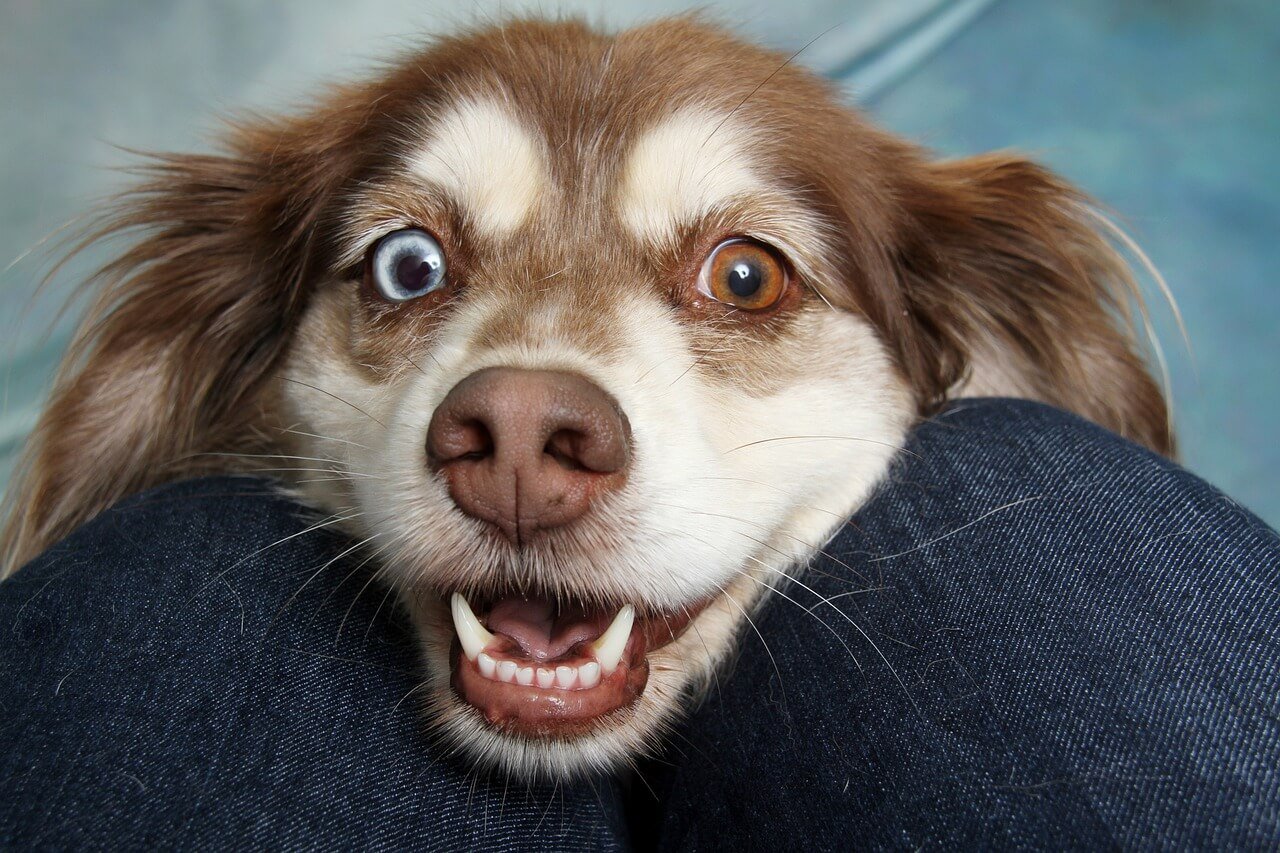Why Dogs Show Their Teeth
Dogs communicate in a variety of ways, and one of the most noticeable behaviors is when they show their teeth. While this action is often associated with aggression, it can actually convey a wide range of emotions and intentions. Understanding why dogs bare their teeth is crucial for pet owners, as it helps them interpret their dog’s mood and respond appropriately. From playful grins to warning signals, this blog post dives into the reasons behind this behavior and how you can address it effectively. Let’s explore the fascinating world of canine communication and decode what your dog might be trying to tell you.
Common Reasons Why Dogs Show Their Teeth
When a dog shows its teeth, it’s not always a sign of hostility. This behavior can stem from various emotional states, each with its own context and meaning. Here are some of the most common reasons behind this action.
Aggression or Threat Display:
A dog may bare its teeth as a warning to potential threats, signaling that it feels cornered or defensive.Fear or Anxiety:
In stressful situations, dogs may show their teeth as a subconscious reaction to fear, hoping to deter perceived danger.Playful Behavior:
Some dogs “smile” during playtime, revealing their teeth in a relaxed, happy manner without any aggressive intent.Submission or Appeasement:
A submissive dog might show its teeth gently as a way to appease a more dominant individual, avoiding conflict.Pain or Discomfort:
If a dog is in pain, it may bare its teeth as a reflexive response to being touched or approached near the source of discomfort.
Understanding these motivations allows you to better interpret your dog’s behavior and respond with empathy and care.

How to Differentiate Between Aggressive and Non-Aggressive Tooth Showing
Not all instances of tooth showing are created equal—it’s essential to distinguish between aggressive displays and harmless expressions. Here’s how to tell the difference.
Body Language Cues:
Look at the dog’s overall posture. A stiff, tense body with raised hackles indicates aggression, while a loose, wagging tail suggests playfulness.Ears and Eyes:
Flattened ears and dilated pupils often accompany aggressive tooth baring, whereas relaxed ears and soft eyes signal non-threatening behavior.Vocalization Patterns:
Growling or snarling alongside tooth showing usually points to aggression, while silence or playful barks indicate friendliness.Context Matters:
Consider the situation—during playtime, tooth showing is likely benign, but during confrontations, it may signal trouble.Interaction with Others:
Observe how other dogs or people react. If they appear calm and unbothered, the tooth showing is probably non-aggressive.
By paying attention to these details, you can accurately assess your dog’s intentions and act accordingly.
Check this guide 👉Dog Teething at 2 Years: Best 7 Expert Tips!
Check this guide 👉How to Clean Dog Teeth Naturally: Best 7 Expert Tips!
Check this guide 👉Black Spots on Dog Teeth: Best 7 Expert Tips!
Signs of Aggressive Tooth Showing | Signs of Playful or Friendly Tooth Showing |
|---|---|
Stiff body posture | Relaxed, wiggly body movement |
Deep growls or snarls | Happy barks or no vocalizations |
Direct, intense stare | Soft, blinking eyes |
Raised hackles | Wagging tail |
Retracted lips exposing all teeth | Partial lip retraction with a relaxed grin |
Steps to Address Aggressive Tooth Showing
If your dog frequently shows its teeth aggressively, addressing the root cause is vital for ensuring safety and harmony. These steps can help you manage and mitigate this behavior effectively.
Consult a Professional Trainer:
Work with a certified dog trainer or behaviorist to identify triggers and develop a tailored training plan.Desensitize Your Dog to Triggers:
Gradually expose your dog to the stimuli that provoke aggression, rewarding calm behavior to reduce reactivity.Reinforce Positive Behaviors:
Use treats, praise, and toys to reward your dog whenever it remains calm in potentially triggering situations.Create Safe Spaces:
Provide a designated area where your dog can retreat if it feels overwhelmed or threatened.Avoid Punishment:
Punishing aggressive behavior can escalate fear and anxiety, worsening the problem instead of resolving it.
With consistent effort and patience, you can help your dog overcome aggressive tendencies and foster a peaceful environment.
Preventing Misinterpretation of Tooth Showing
Misunderstanding your dog’s behavior can lead to unnecessary stress for both you and your pet. Taking proactive measures ensures clear communication and strengthens your bond.
Educate Yourself on Canine Body Language:
Learn to recognize subtle signs of stress, fear, or happiness in your dog’s posture, facial expressions, and actions.Observe Consistent Patterns:
Pay attention to recurring behaviors and contexts to better understand what your dog is trying to communicate.Respect Your Dog’s Boundaries:
Avoid forcing interactions if your dog seems uncomfortable, as respecting their space builds trust.Engage in Regular Socialization:
Expose your dog to diverse environments and experiences to boost confidence and reduce anxiety-driven behaviors.Seek Veterinary Advice:
Rule out medical issues like dental pain or neurological problems that could contribute to unusual behaviors.
By fostering open communication and mutual understanding, you can minimize misunderstandings and enhance your relationship with your dog.
Signs Your Dog May Be Stressed
Stress can manifest in various ways, including tooth showing. Identifying these signs early helps you address potential issues before they escalate.
Excessive Panting:
Heavy panting without physical exertion may indicate stress or anxiety.Pacing or Restlessness:
Constant movement suggests your dog is unable to settle due to unease.Lip Licking or Yawning:
These subtle cues often accompany feelings of discomfort or tension.Avoidance Behaviors:
Turning away or hiding indicates your dog wants to escape a stressful situation.Changes in Appetite:
Refusing food or overeating can reflect emotional distress.
Recognizing these symptoms enables you to intervene promptly and support your dog’s well-being.
Benefits of Positive Reinforcement Training
Positive reinforcement is a powerful tool for modifying unwanted behaviors like aggressive tooth showing. Here’s why it’s so effective.
Strengthens the Human-Dog Bond:
Reward-based training fosters trust and cooperation between you and your dog.Encourages Desired Behaviors:
Consistently rewarding good behavior increases the likelihood of repetition.Reduces Fear and Anxiety:
Unlike punishment, positive reinforcement creates a safe learning environment.Builds Confidence:
Success through rewards boosts your dog’s self-assurance in challenging situations.Promotes Long-Term Results:
Dogs trained with positivity retain learned behaviors longer and generalize them across different scenarios.
Incorporating positive reinforcement into your routine yields lasting benefits for both you and your dog.
Tips for Safely Interacting with Unknown Dogs
Interacting with unfamiliar dogs requires caution to prevent misunderstandings and potential conflicts. Follow these tips to stay safe.
Ask Permission First:
Always seek the owner’s consent before approaching or petting an unknown dog.Read the Dog’s Body Language:
Look for signs of relaxation or tension to gauge whether the dog welcomes interaction.Approach Slowly and Calmly:
Sudden movements can startle a dog; move slowly to avoid triggering a defensive response.Let the Dog Come to You:
Allow the dog to initiate contact rather than forcing yourself into their space.Respect Warning Signals:
If the dog shows its teeth or growls, back away calmly and give it space.
Following these guidelines ensures respectful and safe interactions with dogs you don’t know.
Frequently Asked Questions About Dogs Showing Their Teeth
Is it normal for a dog to show its teeth?
Yes, it’s normal, but the context matters. It can indicate anything from playfulness to aggression.
Does showing teeth always mean aggression?
No, it doesn’t. Dogs may show their teeth due to fear, pain, or even excitement during play.
Can I train my dog not to show its teeth?
While you can manage the triggers, eliminating the behavior entirely isn’t realistic since it’s a natural form of communication.
How do I know if my dog is being aggressive?
Aggressive behavior is often accompanied by growling, stiff posture, and direct eye contact.
When should I consult a professional?
If the behavior becomes frequent, unpredictable, or linked to medical issues, consulting a vet or trainer is advisable.
Building Trust Through Understanding
Decoding why dogs show their teeth requires patience, observation, and a willingness to listen to what your furry companion is saying. By recognizing the nuances of this behavior, you can strengthen your bond and ensure a harmonious home environment. Whether it’s playfulness, fear, or an attempt to communicate boundaries, every display has meaning worth exploring. With knowledge and compassion, you can navigate these moments confidently, creating a deeper connection with your beloved pet.
Why Is My Cats Second Eyelid Showing? Best 7 Expert Tips! Understand causes, health signs, and how to respond when your cat’s third eyelid becomes visible.
How Do I Know If My Cat Died Peacefully? Best 7 Expert Tips! Discover the quiet signs of a peaceful feline passing and find comfort in their final moments.
Cat Allergy Eyes: Best 7 Expert Tips! Discover why your eyes react to cats and learn proven strategies for relief—without giving up your feline friend.
Why Do Abyssinian Cat Colors Matter? Best 7 Expert Tips! Discover the genetics, rare hues, and care secrets behind Abyssinian coat colors for a healthier, happier cat.





